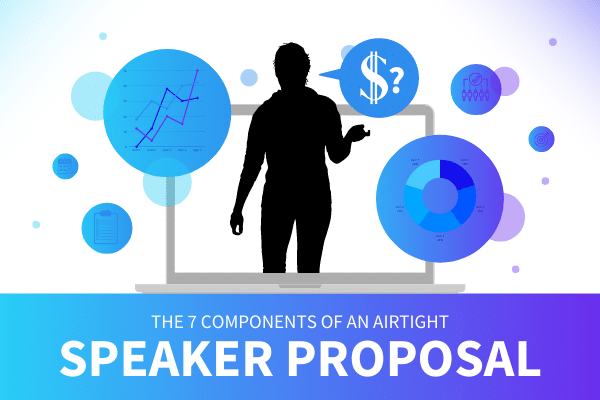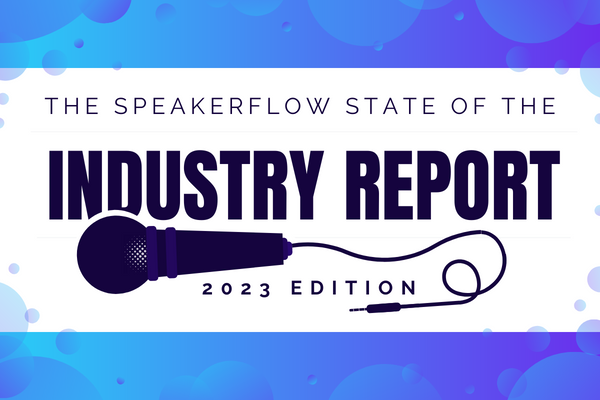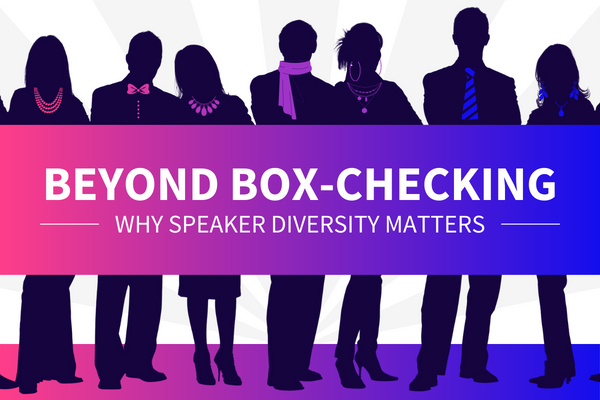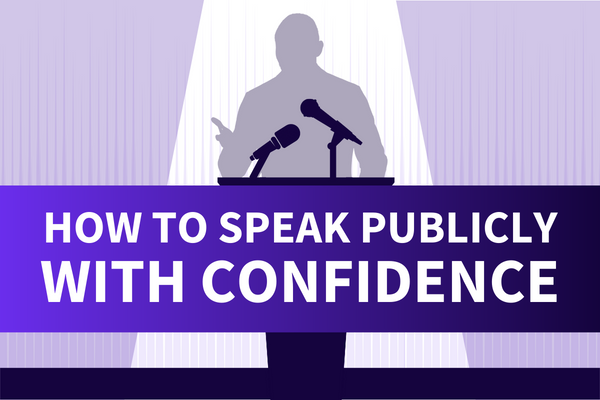Among professional speakers, one of the most common sources of anxiety is sales. From searching for speaking opportunities to handling the dreaded “money conversation,” speaking business sales can be intimidating, even for experienced speakers. Nevertheless, there’s one step in the sales process that can turn this anxiety into anticipation and confidence. I’m talking about the point at which your contact requests a formal speaker proposal.
By this stage, most event planners will be seriously considering you for their event if they haven’t already decided you’re the one. Consequently, knowing how to craft a speaker proposal that sells on your behalf – and, essentially, close the deal for you – is of the utmost importance.
With that in mind, the following guide details the ins and out of writing a proposal. Whether you’re new to the speaking game or a rising star, you’ll find everything you need to know to take this stage in your sales process to the next level.
Let’s get into the details! 👇
What is a speaker proposal?
If you haven’t heard of a speaker proposal before, essentially, sending a proposal is the “beginning of the end” of the speaker sales process. Looking at the image below, for example, you can see the sales process outlined in the standard SpeakerFlow CRM gig pipeline. Here, “Proposal” is the third stage, following “In Discussions” and followed by “Negotiations.” You’ll also notice that sending a proposal usually comes before the “Verbal Agreement” stage. In other words, your proposal is a final selling point, a way to lead the event planner to that initial “yes.”

Long story short, your speaker proposal is a way for you to lay all of your cards on the table. Having met with the event organizer already, sending a proposal allows you to say, “Here’s what we discussed and how I can help your event succeed. The ball’s in your court now. Do you want that success or not?”
How is a speaker proposal different from a contract?
In the sales process graphic above, you may also have noticed the subsequent “Contract Out For Signature” stage and be asking, “How is a speaker proposal different from the contract?”
In short, a proposal is a final “sales pitch” while your contract is a formal and legally binding agreement. The former explains all of your applicable sales offerings, how they could benefit the event organizer in question, and why they should hire you. It also includes evidence of your skills, such as testimonials or recommendations from mutual connections, making it a persuasive document designed to sell on your behalf.
On the other hand, the latter is strictly about the final offering they agree to purchase. If you offer three different speaking packages, for example, the proposal could explain them all and list one as the “recommended” offering for their event. By contrast, the contract would only explain the offering that they chose in the end. It’s meant to be thorough and informative. That way, both you and the client avoid any potential conflict or confusion from Day 1.
Why do you need a speaker proposal?
At this point, many speakers ask, “Why do they need to be separate? How does a proposal benefit me when I could just put the proposal and contract together?”
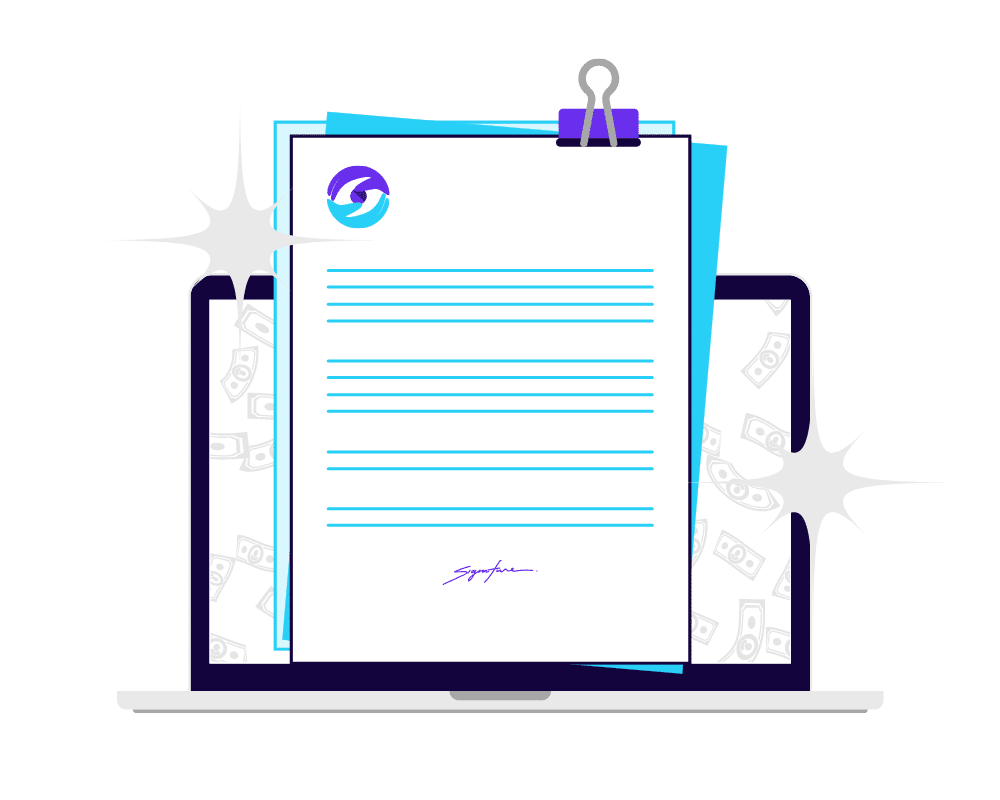
To answer this question, there are a few factors to consider, starting with convenience. Although a joint proposal/contract will be convenient for clients that are already sure to hire you, what about the ones that aren’t? If you have to negotiate or make changes after a joint proposal/contract is signed, the agreement has to be re-signed after any alterations. That means more time and hassle and less convenience for your client, neither of which are a good way to start off your work together.
Similarly, the second factor to consider is legality. In order to be legally binding, a formal agreement has to be agreed upon and signed after all iterations are completed. By sending your proposal separately, you draw a definitive line between the negotiations and the agreement. That way, by the time the contract is signed, negotiations have long been closed and no one can argue that the final document was changed after signatures were added.
And, finally, the last factor to consider is courtesy. No one likes a pushy salesperson, especially event planners juggling twenty different things at once. By sending a proposal separately from your contract, you send a message that you don’t want to be pushy. You’re happy to negotiate and sign a contract when they’re ready, but above all, you’re there to help them. How could they say “no” to that, right?
What should you include in a speaker proposal?
So, we’ve covered what a proposal is and why you need one. But what does the ideal speaker proposal look like? To put it simply, the best proposals tie back to the previous conversation(s) you’ve had with the event organizer and summarize how they can benefit from your services. They also should provide evidence for your skills, so they know you “walk the walk” in addition to “talking the talk.” To meet these objectives, below are the seven most important elements we recommend you include in your future proposals.
1. Custom Intro Letter or Video
First, to start your speaker proposal, create a custom letter or video for your potential client. In this letter or video, mention them by name, thank them for their consideration, and briefly explain what information they’ll find in the following pages of the proposal.
Additionally, when possible, tie your video or letter back to your previous conversations. The more you can demonstrate your interest – and that you see them as a potential partner, not a sales number – the more likely they are to hire you.
Below is an example of an introductory letter with these tips and tricks in action. As you write your own letter or video script, strive to do the same with a similarly professional yet positive tone.
“Hey, Sarah!
Thank you, again, for taking the time to meet with me last week and explain the details of the upcoming Women In Business Conference. I know you’re busy and appreciate you taking the time to connect with me, especially for such an inspiring event!
As promised in our previous conversation, I am super excited to share the following proposal with you. In it, you’ll find information about my speaking programs along with their benefits for attendees and the corresponding investment options.
Feel free to look this over at your earliest convenience. My goal is to play my part in making Women In Business 2020 a smash hit, so if you have any questions or concerns about my programs for doing so, please don’t hesitate to reach out.
Alternatively, if you like what you see, even better! Just let me know, and I’ll send over a formal contract to get the ‘event prep’ ball rolling’. 🙂
Thanks again, Sarah, and talk to you soon!”
2. List of Problems Your Client Is Facing
Second, after the intro letter of your speaker proposal, include a short section for the prompts behind your proposal. Here, break down the things that your potential client mentioned in your previous conversations that led them to you. These can include:
- Problems within their company or organization, such as high employee turnover.
- Changes to their company or organization’s structure, such as a merger or branch closure.
- Trends within their company or organization for which they’re unprepared. Common examples are increased use of technology in customer experiences and the increasing popularity of remote work.
- Changes within the potential client’s industry as a whole, such as new regulations or restrictions.
- Needs or goals for a specific event. In some cases, these are directly related to a change, problem, or challenge listed in one of the above bullets.
In short, this section should reiterate the things your potential client is looking for. It may seem excessive, as they already know what they’re up against. But, by reminding them in your speaker proposal, you not only demonstrate how carefully you paid attention during previous calls. You also set them up for the next section of your proposal.
3. List of Solutions You Provide for Those Problems
Speaking of which, the third section of your speaker proposal is all about solutions. After recapping your potential client’s challenges or concerns, this section should wash them away. In it, you should include relevant information for any applicable solutions.
Depending on what you offer within your speaking business, this may include:

- Keynote program descriptions and audience takeaways from each.
- Workshop descriptions and corresponding participant rewards.
- Pre- or post-event coaching program descriptions (which can be for entire teams or solely for executives).
- Pre- and post-event audience analysis packages (which would analyze audience members’ answers to pre- and post-event survey questions in order to demonstrate growth).
- Book, workbook, or coursework descriptions.
- Speaking “packages” incorporating several of these offerings for a single fee.
All in all, this section should outline a maximum of three recommended solutions. For each of these proposed solutions, include basic information about what is included, how it relates to their problems, and how much it costs. Then, highlight one of your recommendations as the best fit, based on their needs.
Ultimately, your goal in the last section is to remind them how much work needs to be done, then, in this section, relieve all of their stress from that impending work by saying, “No worries! I’ve got a program for this.” 👍
4. Written & Video Testimonials
Next, it’s time to show your speaker proposal recipient the proof of your success. To do this, include, in this section, testimonials from previous clients as well as any social proof from past audience members.
To ensure these testimonials leave an impression, keep in mind the following tips:
- When possible, include testimonials specific to the potential client’s industry. If they can see you know the industry already, it’ll be easier for them to trust your expertise.
- If you have any mutual friends or associates, include testimonials from your work together. According to Nielsen, 83% of consumers say they trust the recommendations of friends and family most. This makes these testimonials exceptionally persuasive in your speaker proposal.
- Keep this section short and sweet (we recommend between 6-10 testimonials). It’s meant to provide evidence but not to boast about your success.
By this point in your proposal, your primarily goal is to bring your potential client full circle in their decision to hire you. Until now, they have thought you might be a good fit for their event. Between your proposed solutions and your testimonials, you’ll show them that you’re definitely a good fit.
5. Details of What You & They Can Expect
In the fifth section, outline your expectations for your work together. Whether you’re collaborating virtually or in-person, this section should answer the following questions, at a minimum:

- Do you expect your travel costs to be covered separately or is that included as a part of your fee?
- How early do you anticipate arriving prior to your presentation? For virtual presentations, will you be available for a rehearsal beforehand?
- What audiovisual requirements do you have for live events? This can include HDMI cords, laptops, extension cords, projectors, a lapel mic, etc.
- Do you require a deposit before the event in order to hold the date on your calendar?
Conversely, this section should also include a list of things your potential client can expect from you. A few common examples among speakers include:
- A 1-hour keynote presentation on the topic of the event.
- Pre- and post-event surveys from audience members, the data from which will be compiled into a report.
- Post-event meet and greet with audience members to answer questions.
- Post-event dinner and networking with event executives.
- Three monthly post-event follow up meetings to provide company coaching.
- Video collateral (such as an interview) to be used for promotional purposes on the event host’s social media channels.
Although the length of this section will vary depending on your recommended solution, best practice is to keep it brief. Your contract can go into more detail about the expected results – tangible and intangible – of the event. Your proposal is only meant to confirm their interest.
6. Basic Outline of What’s Included in Their Investment
After outlining the scope of your work, it’s time to address the cost of it. In this section, you don’t have to go into extensive detail about the cost of your proposed solution. Instead, we recommend summarizing the three potential solutions you covered before (See Section 3) and what’s included in each one. Then, from there, breaking each option down so the reader can see how much its components cost.
In this way, you lay all of your cards on the table, so the event organizer can see the “best of the best” option. Even if they can’t afford it, it’ll be appealing, nevertheless, and it’ll be up to them to choose which components of your packaged solutions they’ll need to give up in order to stay on budget. There’s also the possibility that they’ll see your top recommended solution and be unable to afford it but, instead of giving up on it, seek approval from their team for a larger speaker budget.
In either case, you can rest assured that you did everything possible (as far as your proposal’s concerned) to earn your maximum fees. Plus, your potential client can rest assured that you’re not going to push them into a decision. You’re just there to answer questions, clarify your offerings, and help in whatever ways they can afford.
7. Clearly Defined Next Steps
Lastly, to round out your speaker proposal – and encourage your potential client to take action – end with clear next steps. One of the biggest mistakes that speakers make is leaving a step in the sales process open ended.

For example, when you’ve sent a proposal, some event planners will reply, “Great! I’ll take a look at this and get back to you asap.” Here, it can be tempting to reply, “Thanks! Talk to you again soon!” But, in saying this, neither of you knows when the other expects a decision. It also suggests that neither of you are prioritizing the other person’s time, which isn’t a great way to kick off a professional relationship… Hopefully, that goes without saying. 😬
A better way to reply to an ambiguous email – and the best way to end a proposal – is to be transparent. If you don’t hear from them about the proposal, when are you going to reach back out? If they’re happy with the proposal, should they reach out to you via email, phone, or both? What about if they have questions or concerns or if they want to negotiate?
All of these questions are important to answer if you want to keep opportunities from slipping through the cracks. When adding the finishing touches to your next speaker proposal, keep this in mind. Assuming you afforded the same care to the six steps above, you’ll be on your way to effortlessly booked gigs in no time.
To learn more about writing speaker proposals, check out our previous guide, “How To Nail Your Next Speaker Proposal In 5 Easy Steps.” Additionally, for technology designed to simplify sending proposals – and the rest of your sales process – check out our operating system. Book a demo to learn more. 👍


